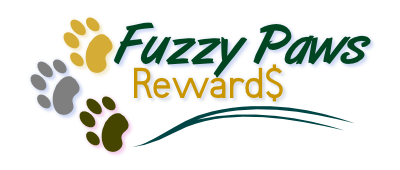Bringing Home A Second Dog:
Introducing a second dog is a lot of work, and often stressful for the whole family.
This Information will help make the introduction easier.
Adding a dog to your family can be a very rewarding experience for you and your current dog. Dogs are social creatures. Many dogs prefer constant company over being alone. But dogs are also territorial and possessive creatures. Introducing a new dog is usually NOT a smooth process. If you're getting a new dog to provide company for your current dog, you may want to think twice. It most likely won't work out the way you want it to.
First you must evaluate your dog's temperament. Is your dog very protective of you, your home, your yard, your car, his food or toys? Has he/she had many interactions with other dogs? How do they respond to other dogs? Are they bossy, playful, indifferent, afraid or aggressive? If your dog has not had many positive interactions with other dogs, is dominant or very protective of the family, introducing a new dog will tend to be very difficult. Your dog will most likely be happy being the only dog.
If your dog has not had much exposure to other dogs, you should work with them to update their socializing skills prior to getting a second dog. Obedience classes, pet supply stores, parks and homes of other dog owners would be a great start. If they shows signs of fear or aggression towards other dogs, work slowly to expose them to others. Slowly introduce them face to face. You may need the assistance of a trainer to do this.
Once your dog reacts positively towards other dogs, you may consider adopting another. It is generally accepted that introducing a second dog of the same sex is more difficult than introducing a dog of the opposite sex. Introducing a puppy is much easier than an adult. Problems may start however, whenever the puppy matures. Most importantly, you need to know how dominant or "bossy" both dogs are towards other dogs. Putting two very dominant dogs together will result in lots of aggression and challenges over who is the boss.
If you are considering adopting another dog, it is best to bring the current dog to the shelter where the possible new dog resides so they can spend time together. This is to ensure the dogs don't immediately react to each other with extreme fear or aggression. Typically, the dogs will greet each other briefly and size each other up. They may play together a bit. Then they tend to ignore each other. This brief introduction on neutral territory does not necessarily reflect what the first few days or weeks will be like at home. Two dogs that meet on neutral territory have little reason to interact or form a relationship. Two dogs required to live in the same pack must establish a relationship and learn to get along.
When you bring a new dog into your home, some aggression is normal. The dogs need to work our their relationship by letting each other know what their limits are. Aggression is a form of communication used to establish the boundaries of a relationship. When one dog gets too playful, the other reacts with aggression to say "stop it". When one dog tries to take away another ones possession, the other may react with aggression. The dog whose aggressive displays are most successful at controlling the other's behavior will become top dog or alpha. Once the "alpha" is established, the need for aggression decreases. The bottom dog or "beta" learns to defer to the "alpha". This may take a few weeks to establish. Two very dominant dogs may continuously try to become "alpha" and aggressive behavior does not decrease.
What is Normal Aggression?
Any aggression that does not result in injury is normal and ok. Dogs learn to inhibit their bites as puppies when playing with and challenging their litter mates. Normal aggression includes:
- Bearing teeth, lip-curling
- Growling
- Snarling
- Snapping
- Raised hair along the back and tail
- Stiff posture; Standing over another dog
- Stiff tail-wagging with the tail straight up in the air
- Pinning the other dog down by the neck
Normal aggressive interactions usually last just a short time (10 seconds or so).
Unacceptable Aggression Includes:
- Bites that break the skin
- Aggressive interactions that last more than a few seconds that include broken skin.
A dog may react to an aggressive display by "yipping" like a puppy, rolling over on its back, running away, crouching down smacking its lips, etc. This is also normal, and is referred to as "submissive" display. Dogs learn as puppies that submissive behaviors turn off aggression in others. If the aggressor continues to attack the dog showing submissive behavior, you will need to intervene.
Generally, your dog will be stressed by the addition of a new dog. Dogs thrive on structure and routine, and a new addition definitely upsets things. Your dog may temporarily become destructive, eliminate in the house and do all sorts of things you had thought they had outgrown. They may become depressed and ignore food. This is normal and temporary, but generally very upsetting for owners. Be ready to deal with these problems. Most new owners get upset when the new dog acts aggressively and dominates their current dog. Be ready to accept this should it be the case.
It may be best to gradually introduce the dogs. Put them together for short SUPERVISED periods. Never leave them alone together. Gradually increase the time spent together. If you're having aggression problems, do this gradual introduction over a month's time.
Make the time they spend together playful and fun. Pet BOTH dogs, Praise them and give them treats for interacting nicely. (if one or both dogs are very possessive, this may be difficult) Praising and rewarding a dog for behavior while another dog gets attention helps. They will learn to accept the other dog getting attention. Make them associate being around each other with "feeling good". This may help them to get along and feel less threatened by each other. Also, be sure to exercise both dogs each day. This will help alleviate stress or frustration the dogs may feel. Tired dogs are generally much better behaved and more likely to get along.
Remember that YOU are always "top dog", and it's important for your dog to know who is in charge. One of the two dogs will probably be more dominant than the other. However, you are always "top dog" and if you decide that the "underdog" or beta gets the first treat, then the alpha needs to learn and accept this. Be consistent!
Introducing a second dog IS a lot of work and sometimes stressful for the whole family. If you're prepared to deal with the challenges, consider making the commitment to care for another canine friend.

